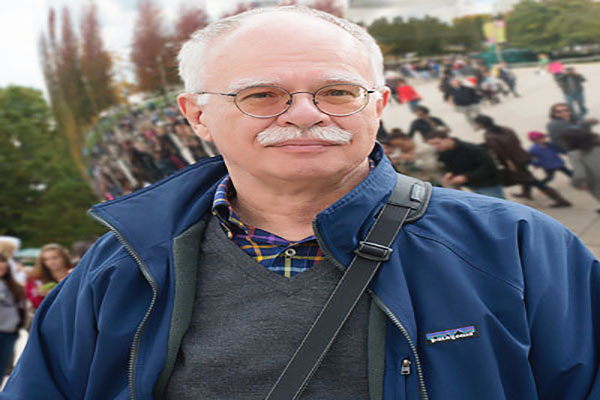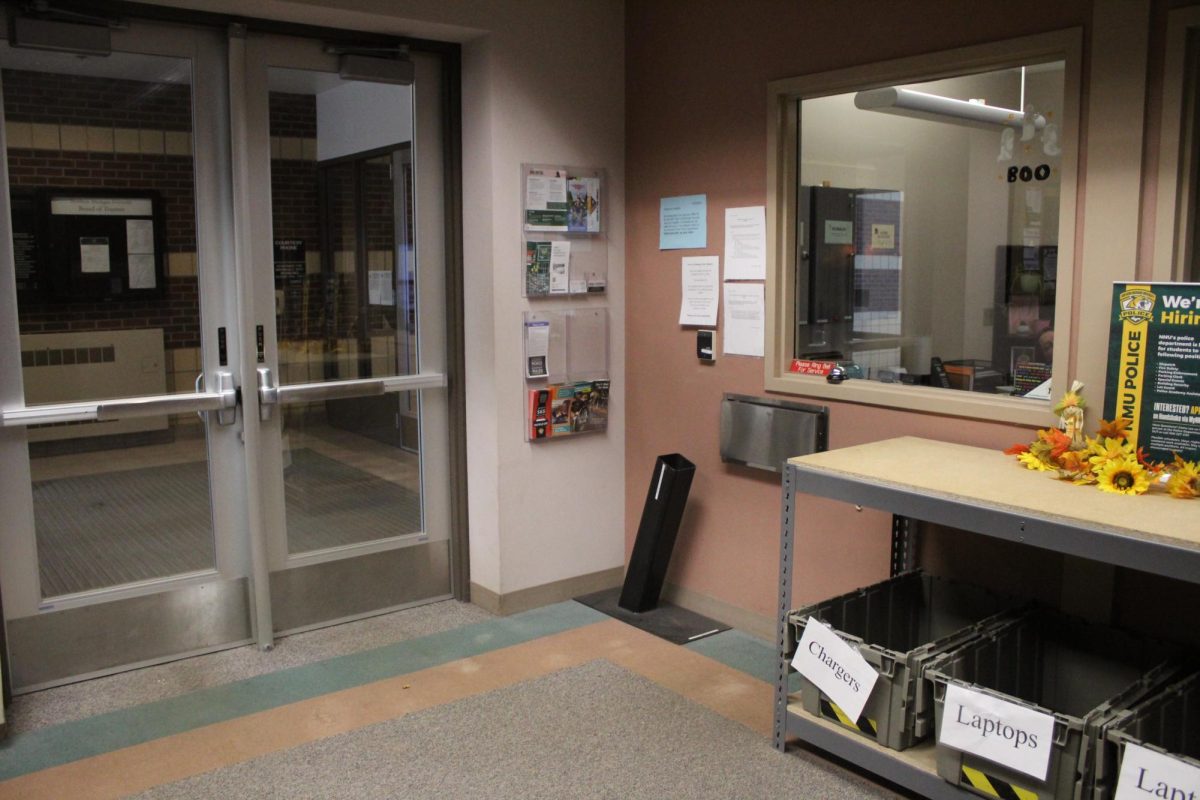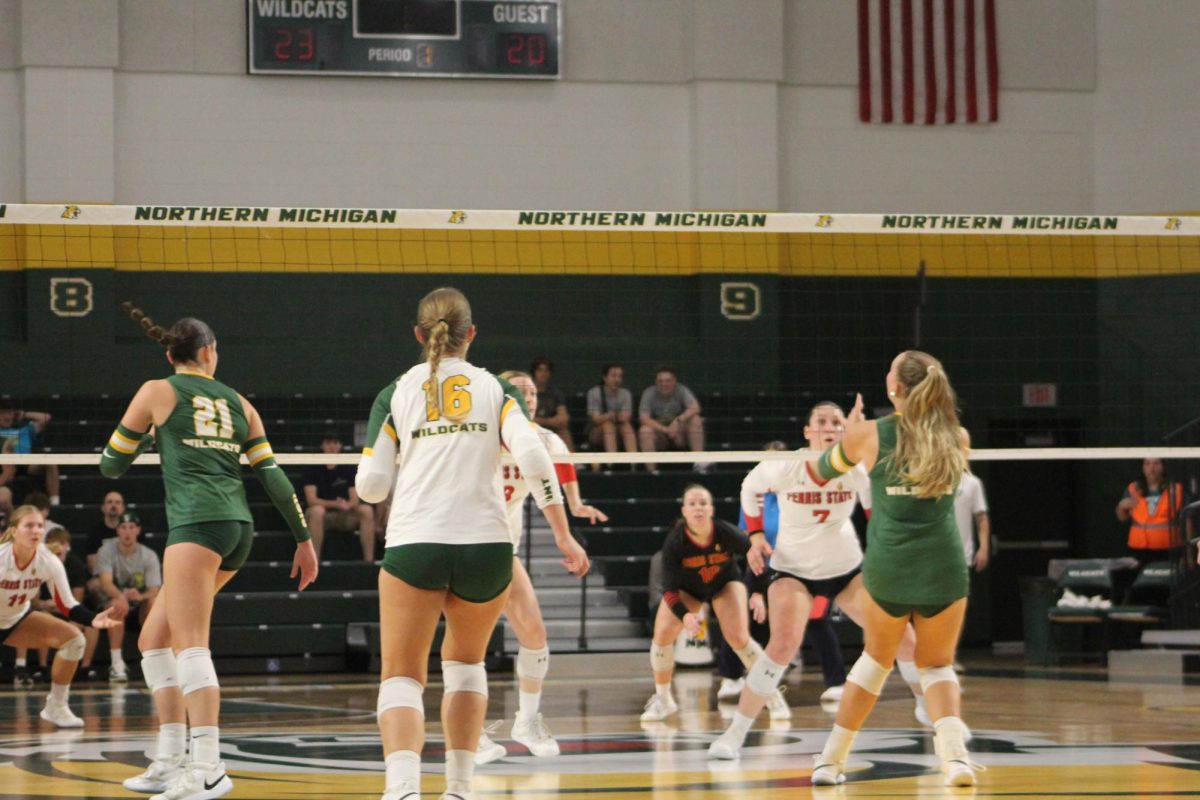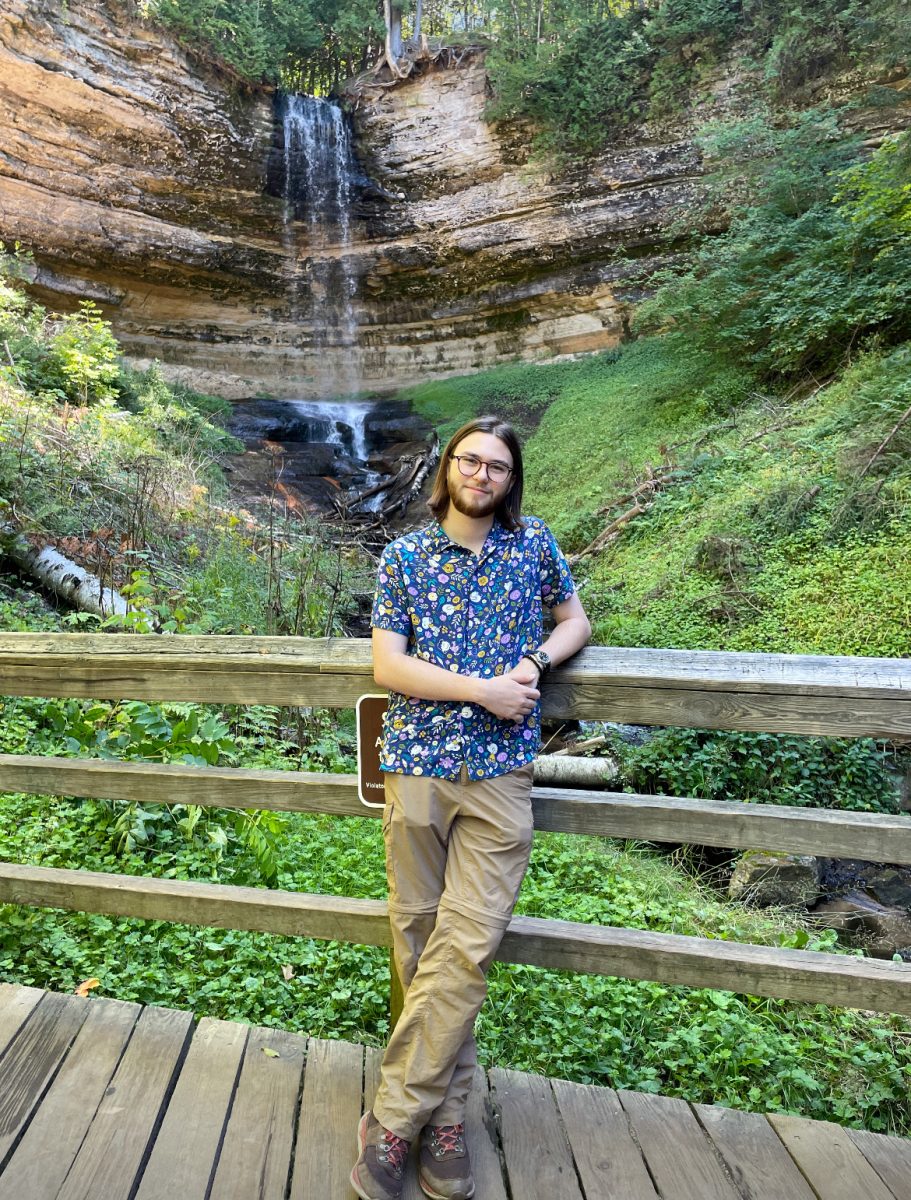In a quiet lobby normally humming with the sound of scrambling students, sits a tall man with graying hair in a blue and white checkered button up shirt, peering through round, thin-framed glasses.
 Forty years ago, this man from St. Louis, Missouri was 25 and working in the first weeks of his teaching career at Northern Michigan University.
Forty years ago, this man from St. Louis, Missouri was 25 and working in the first weeks of his teaching career at Northern Michigan University.
Beginning in the fall semester of 1976, Dennis Staffne was brand new to the art department at NMU.
Having recently graduated from the Art Institute of Chicago with both a bachelor’s and master’s degree of fine art, Staffne moved to Negaunee after working for a commercial photography studio called Obata Design in St. Louis.
Before having moved to Negaunee, Staffne remembers visiting Green Bay, Wisconsin and thinking he and his wife had gone as far north as they could go.
“We turned down a two-lane road up toward this way and turned around because it just looked too remote,” he laughed. “At the time, we were living in Chicago. It was a very different environment.”
After getting a teaching job at NMU, Staffne moved to Negaunee. The first winter was an adventure, he said.
The first thing he remembers is thinking, “What are these outlets outside the building?”
The outlets are used to plug in a car’s engine heater at night, he explained. Their old Land Rover had to be plugged in otherwise it wouldn’t start the next day.
“The winter was a lot of fun the first year because we were just wondering how much more it could snow,” Staffe said. Now a full professor who stands as the senior faculty member of the art department, Staffne
continues his teaching career, having transitioned from analog to digital photography.
When he first arrived to campus, there was no lighting equipment, let alone an entire studio of strobes and lights that are used by his students today.
“Digital was not even a thought,” he laughed. Although the first digital camera was invented by Kodak in 1975, the process was not mainstream for many years, he said.
“It was a slow evolutionary process,” he said.
The first digital camera was a 1/100 megapixel camera that took 23 seconds to make an exposure of a non-moving object in black and white. Having taught over the years through the advancing of technology, Staffne has time traveled alongside a transitioning industry.
He taught the very first electronic imaging course at NMU using an IMac Plus, which was a black and white computer. Other software used by the students included Mac Draw and Paint, and other basic programs to the
original Mac.
Staffne’s introduction to digital image making came at a workshop in Chicago by artist Jeff Schewe, who was doing work with a computer that was unheard of, Staffne said.
Staffne’s transition to digital photography came with the download of Photoshop 2, which was invented in 1991. Since that release date, there have been over 20 different software updates.
Although the equipment in the photo studio has transitioned from chemical baths to power outlets, the reason for teaching has stayed the same, he said.
“One of the reasons I enjoy teaching is seeing students engage with creativity, and it really doesn’t matter that they’re using digital now, or that they used analog in the past,” he said.
Analog photography has continued into today’s photography degree, although it’s only a small section of what students are now completing at NMU. Student interest in film has increased over the years, Staffne said. It is now a vintage process versus something that is being transitioned out of.
“Now it seems like something we’ve passed, and students don’t want to let it go completely. They want to re-experience it.”
Because a career in photography has many different directions students can go, it is important for him to support their goal in whatever way he can, Staffne said.
“It’s exciting. I want every student to succeed at whatever level they want to pursue,” he said. Since beginning his career, Staffne said his teaching style has matured into a more informal relationship with his students.
“You are not the only one learning here. I’m learning too. It’s a back and forth. I’m not just giving you information; I’m exchanging knowledge with you, and you’re sharing your knowledge with me. I think that’s really important,” he said. “I’m not up on a pedestal.”
Looking forward, retirement from NMU is in the future, but with no exact date. Moving back to St. Louis after retirement is a possibility, but regardless of location, Staffne said he will continue to make photography for himself.
“I have spent my whole adult life doing photography creatively, and I will continue to do that whether or not I’m teaching,” he said.
But before the day comes when he will hang up his teaching hat, he hopes to continue to teach students how to develop their creativity while still keeping a realistic goal of employment in mind. Some art schools don’t put as much of an emphasis on employment after graduation, he said.
“It’s like pushing students off of a cliff. Students have to prepare for working in the real world as well as being creative and critical thinkers,” he said.
Staffne has seen 40 years of students come through the photography program, but is still able to keep up relationships he has created through social media sites like LinkedIn.
“I have students from 30 years ago that I remember clear as day.” And as for those infamous U.P. winters, after 40 years they are nothing new to this experienced professor, photographer, and U.P. transplant.
“I said the first winter was an adventure. I think it’s less of an adventure now. It’s more of an endurance,” he laughed.



























